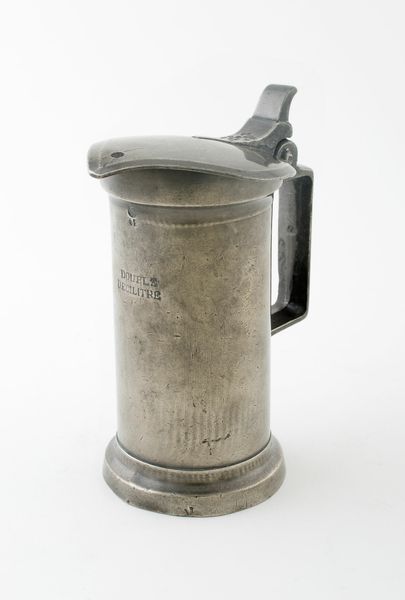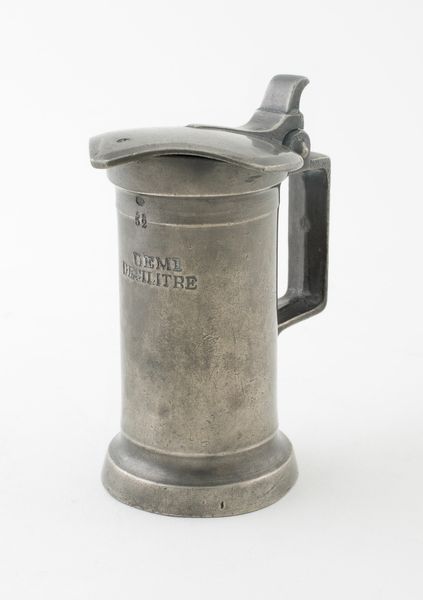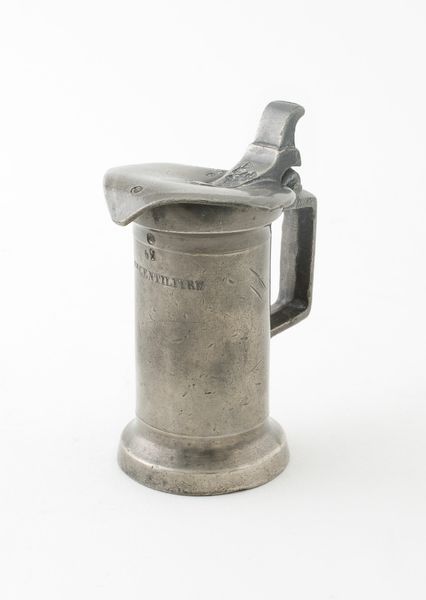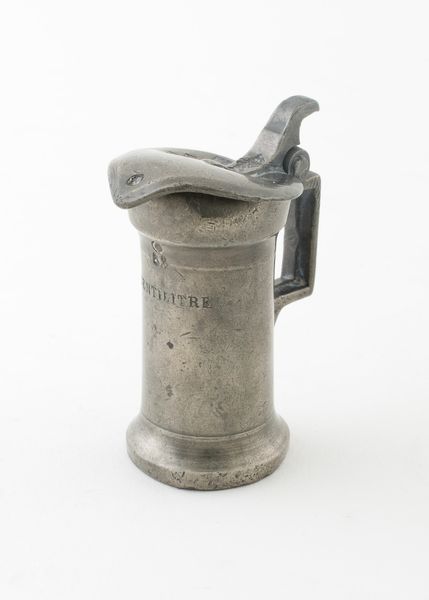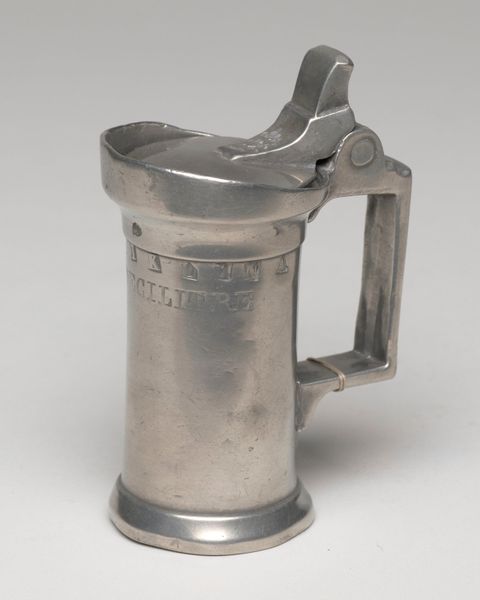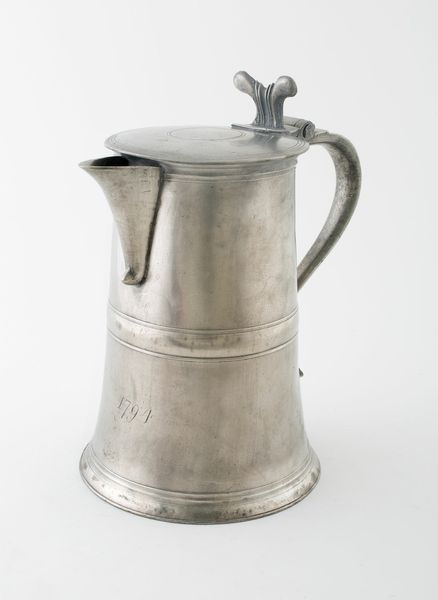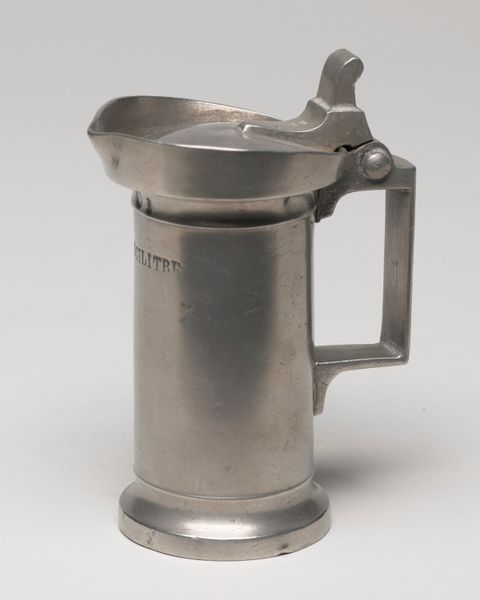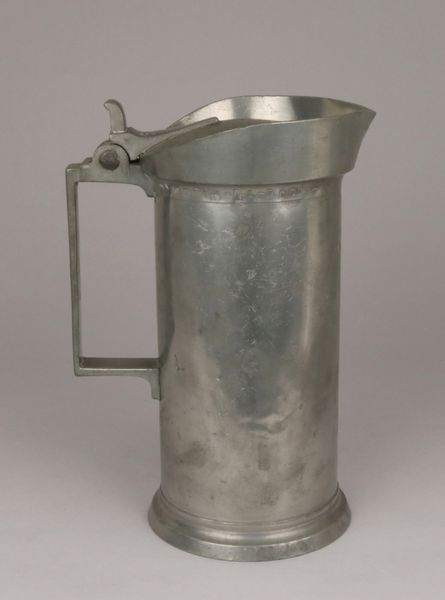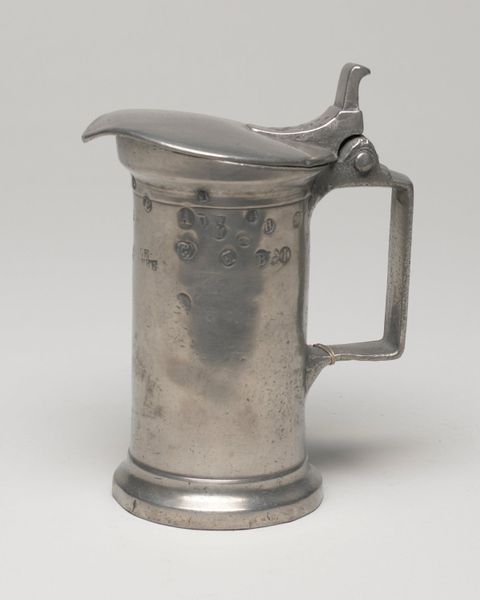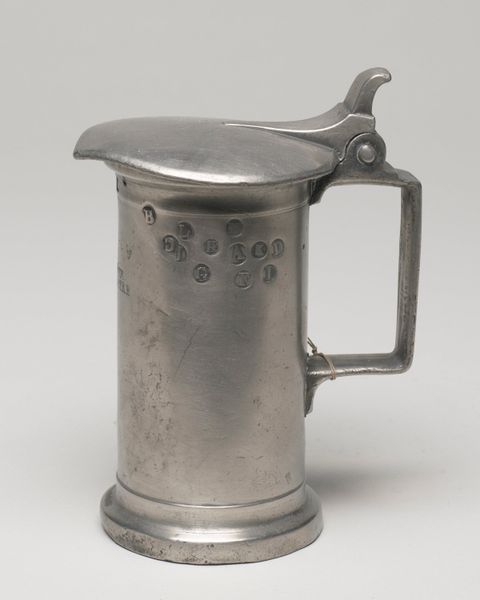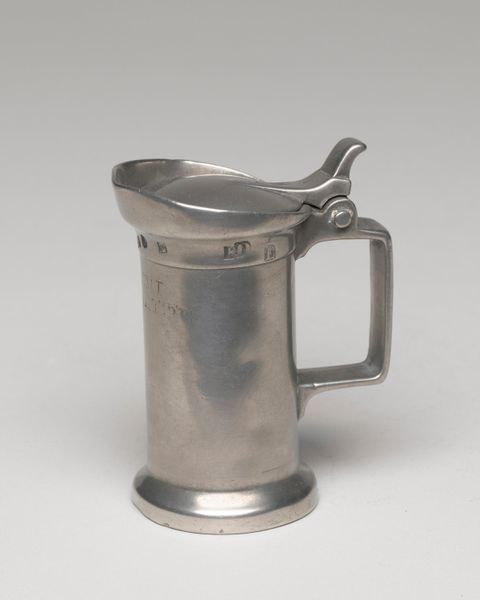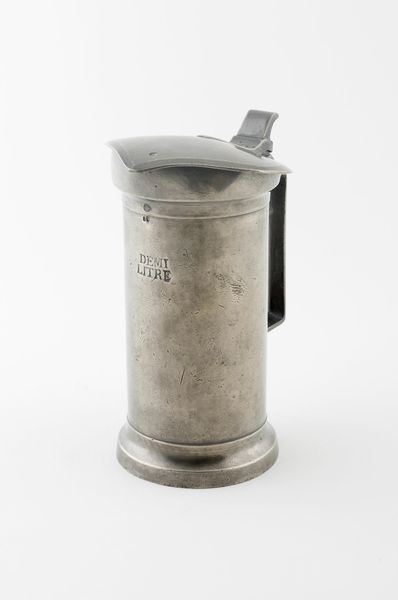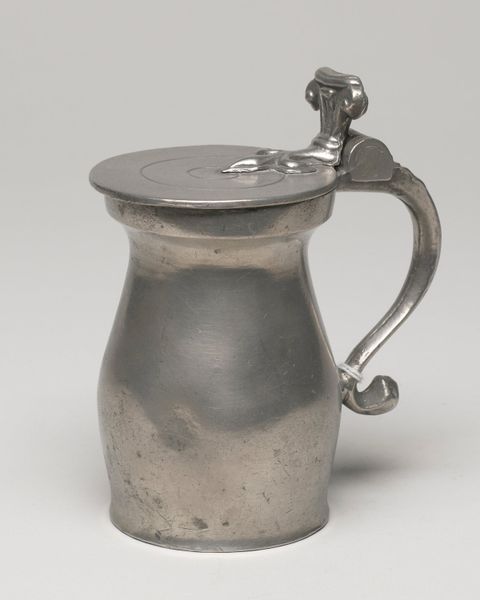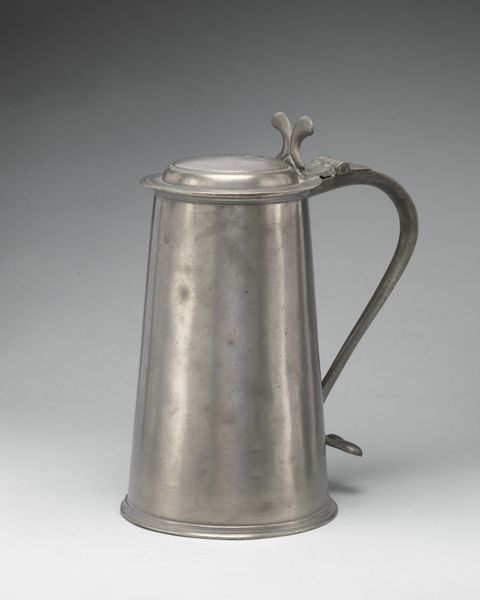
metal, photography
#
metal
#
photography
#
product photography
#
decorative-art
Dimensions: 10.8 × 8.9 cm (4 1/4 × 3 1/2 (incl. handle) in.)
Copyright: Public Domain
Editor: So, we’re looking at a metal "Decilitre Measure" from between 1875 and 1895, made by Le Seigneur in Caen. It has a kind of stoic presence, doesn't it? Almost like a character. What story do you think this piece tells, particularly considering its time? Curator: The object speaks volumes about the standardisation of everyday life. The late 19th century saw an explosion of industrialisation and a corresponding push for uniform systems. Measuring devices like this, adopted widely and guaranteed accurate, are symbols of governmental power extending into commerce and daily transactions. Editor: It feels a bit… utilitarian. Would something like this have any artistic merit beyond just its function? Curator: Absolutely. Consider who would commission it, use it, control it, and inspect it for approval; standardization itself becomes an ideology manifested in a common object. Look closer. The details—the manufacturer's stamp, the weight and size assurance—all reflect values placed on quality, verification, and national commercial strength, that are imposed at a societal level. Even its survival speaks volumes, having been purposefully archived and placed in display for a modern public. Editor: I see what you mean. It’s more than just a simple measure. Curator: Precisely. How do we determine cultural importance? How does function turn into form? This metal measure is not merely utilitarian; it embodies the larger socio-political movement towards unification and regulation that transformed society. And do you agree? Editor: Yes, I agree. I initially overlooked that connection, focusing solely on its surface and functionality. Seeing it as a product of larger political systems shifts my perspective entirely. Curator: And now you see the object – once simple – as something representative and ideological, as more than an instrument, and as something we continue to reflect on today.
Comments
No comments
Be the first to comment and join the conversation on the ultimate creative platform.
